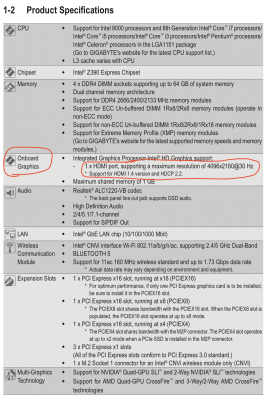- Joined
- Mar 5, 2019
- Messages
- 34
- Motherboard
- Gigabyte Z390 Aorus Ultra
- CPU
- i9-9900K
- Graphics
- RX 580
- Mac
- Mobile Phone
Specs show that the iGPU is HDMI only and only 4096x2160@30 Hz.If I remember correctly, it worked if I had my iGPU enabled.
What SSDT are you using? I would like to give it a try.
SSDT for USB I/O mapping? I'm using a USB mapping injector KEXT I created from USBMap in lieu of an SSDT.


